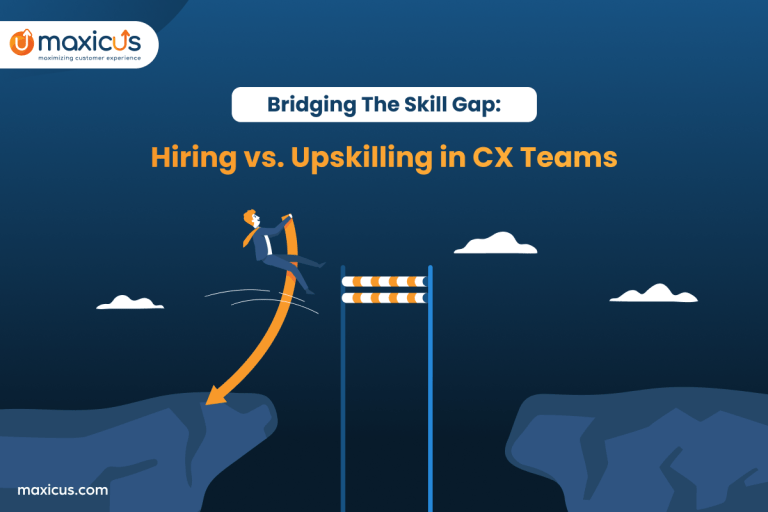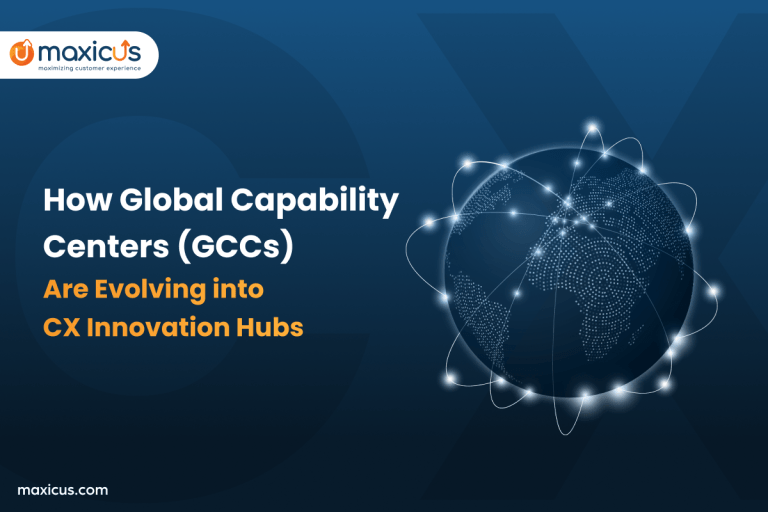Here’s how to revisit your Customer Experience Strategy post COVID-19
Outsourcing to call centers is something that all growth-oriented organizations start to consider at one point or another. For a successful customer experience strategy, it’s almost impossible to imagine sales and customer service without the backing of a reliable BPO partner to shoulder this responsibility.
But due to the COVID-19 outbreak across the world, organizations have become greatly responsible for the health and well-being of their employees. When offering customer service, brands cannot afford cynicism. When employees have a safe and secure environment to work in, in a time like this, a considerable amount of worry is lifted off of them. More importantly, now that the businesses are looking to open up, there is a need to go over the action plan and ensure that it focuses on both customer and employee care.
But what is a Customer Experience Strategy?
The customer experience (CX) is the sum-total of all interactions your business has with its customers, both pre and post-sales. Subsequently, a customer experience strategy defines the actionable plan to deliver exceptional experiences across customer interactions.
Knowing that your organization is “customer-centric” and is a customer-service business is not enough to bring about organizational change. To be able to build momentum from within, your company must know how unique customer experiences help the brand perform in the market.
There are 6 areas of digital customer experience, according to Customer Strategist Journal:
Reachability
Is your business available across preferred digital channels? How do you use them to communicate with your customers?
Service Convenience
How are you servicing your customers online? Is the information provided online accurate and up-to-date?
Purchase Convenience
Is your customer able to make purchases without friction? Can transactions be made digitally? And if need be, is your brand available to help a customer through the channels employed?
Personalization
How is your brand making each interaction with users more personal? Are you able to detect the customer’s preference automatically?
Simplicity
How simple is your channel navigation? How easily is your customer able to reach out to you via digital or voice channels?
Channel Flexibility
Do you enable customers to switch channels of communication as per their convenience without them having to repeat themselves every time?
How is all that going to change in the new normal?
The basics remain the same. We still consider customer ease and convenience as the drivers of a customer experience strategy. However, with the change in priorities as to what the ‘normal’ was, some dimensions are added.
So, is now the time to switch from the traditional centralized approach to a more flexible and innovative, decentralized call center solution?
The answer may be yes.
But it’s important to conduct a thorough analysis of the decision, taking into account potential risks and benefits of decentralized call center strategy. And there is one more consideration: should call center operations like customer support, lead generation and telesales remain in-house, or would it be better to outsource?
A new wave: Customer Experience Strategy in a Post-COVID world
The analysis begins with an assessment of all aspects associated with customer experience, both direct and indirect. This includes performance analysis of answering customer inquiries and resolving problems by phone, email, and through social media channels, even during the lockdown. Apart from customer experience, employee benefits and productivity needs to be taken into consideration.
It’s also important to examine the answers to these key questions:
Is your current vendor helping you maintain productivity for your call center operations?
Have you lost customers because of poor service during this lockdown?
The next step is to put together the list of features that your customer experience strategy might be missing. This checklist should help:
Effortless Set up: Was your traditional BPO vendor able to help you with easy transitioning of your call center operations to remove contingencies? Were your support teams set up remotely during the lockdown? Try and recall the issues you faced while setting up your WFH Call Center solution.
Tools to Manage and Monitor Agent Productivity: Are you able to access reports on a real-time basis for Agent Productivity, Wrap-up Time Limit, and more help manage agent efficiency?
Quality Assurance: Are supervisors and admins able to listen in on calls, whisper to agents, and jump in on conversations in case of escalations?
Help and Track Agent Activity: Can admins track agent activity with remote access to their systems to ensure customer data security?
Access to information: Are you able to update and refresh the information that agents need on a timely basis? Does your current solution have in-built automation and workflows, which help your agents to meet your goals?
Effective Communication: Do you have the ability to broadcast important messages to one or more agents in real-time and get visibility on who has acknowledged the message?
Going over this checklist will help you realize the loopholes that your business may have been jumping for now. But you should now have a clearer picture to create a more sustainable and scalable customer experience strategy.
Maxicus has created an integrated, AI-based, WFH Call Center Platform. Leap recreates a BPO-like, secure environment in any Internet-enabled space. Not only is it a solution to the checklist above, but it has also allowed some of the biggest brands to continue supporting their customers, even during the lockdown.
Why should you outsource your Contact Center Operations?
Outsourcing contact center activities can offer additional benefits through effective customer engagement. The alternative during this lockdown phase will be to manage in-house multiple customer communication channels such as calls, emails, webchats, and text messages. Establishing an omnichannel contact center during a situation such as a lockdown might take way the intensity required to stay focused on core competencies. The cost, time, and energy needed for staff training and shifting ongoing operation is an expensive proposition.
Apart from that, there is another important factor that needs to be considered. Contact center operations centralized in Tier 1 cities (usually a stone throw away from client HQs) were affected greatly, as most Tier 1 cities continue to have restricted movement, and offices shut.
However, companies in India that opted for contact centers based in Tier-2 locations that were decentralized and flexible were able to scale their operations far more quickly to adapt to the situation. More than that, they were able to gain an added edge due to the lower cost of operations.
Furthermore, leading Tier-2 locations for Contact Center Operations are typically centers of higher education within the state ensuring long-term talent sustainability. They also attract talent from nearby regions adding to the overall pool. Relatively lower competitive intensity in such locations also results in lower recruitment overheads and production ramp-up time.
It might be the right time to break away from the hype of pricey call centers in Tier 1 Cities and opt for the vendor who actually helps you decentralize and boost your customer service.
Reinventing your Customer Experience Strategy
Many successful companies prefer to turn over customer service activities to an outsourcing service provider so that they can focus their time, energy, and financial resources on producing and improving the core product or service that creates customers in the first place.
Isn’t this the need of the hour? To focus on core competencies and rely on BPO experts to support you fulfill your commitments to your customers?
Maxicus supports operations in multiple cities and works on creating a customized solution portfolio to cater to individual business needs. With the growing need of becoming more frugal and sustainable, it is the right time to reconsider your business priorities and reinvent your customer experience strategy.










